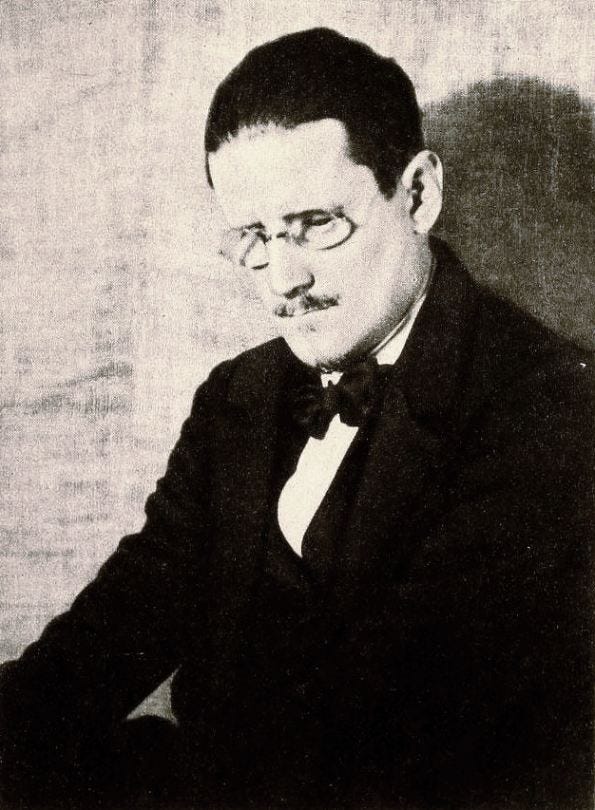Some authors are known for their clear, sprightly style. They write short stories and novels that readers race through no problem.
And then there’s James Joyce. He did not go the clear and sprightly route.
James Augustine Aloysius Joyce was an Irish novelist and poet best known as the author of Ulysses, the 1922 modernist novel many people consider one of the greatest works of literature. No one would ever consider it a beach read.
With its parallels to the Homeric epic poem The Odyssey, Ulysses is famous for its stream of consciousness technique and experimental prose. Joyce even bragged it was so full of puzzles professors would argue over it forever.
So what do you do when you’ve written one of the world’s most enigmatic novels? Well, follow it up with an even more arcane work of fiction, of course.
And that’s what Joyce did with Finnegans Wake, crafting it over 17 years and eventually publishing his final novel in 1939.
Joyce essentially doubles down on his stream of consciousness writing style, ladling in literary allusions, dream associations and then for good measure, making up words. He essentially wrote a novel that’s been called one of the most difficult in Western literature.
Again, not a beach read!
However, one of those made-up words (or “neologism” to be more professorial about it) found its way into particle physics. That’s right: one of Joyce’s strange words leaped from arcane literature to baffling science.
So back in the 1960s, theoretical physicists were trying to hash out what was going on with the growing number of subatomic particles they kept finding during their experiments. Atoms were thought to be made up of protons and neutrons in a tight nucleus with electrons swarming about it.
But what if there was something even smaller that combined to make up the protons and neutrons? In 1964 physicist Murray Gell-Mann proposes just such a concept. Basically, he describes the building blocks for atoms (which are then the building blocks of all matter, like you, me, my dog, the Earth, stars, etcetera, etcetera.)
Now another physicist came up with a similar theory that year. George Zweig called his building-block subatomic particles “Aces.” Gell-Mann’s theory called for a trio of subatomic particles to bind together to form matter.
He, however, did not call his fundamental particles “Aces.” No, he turned to something else to name his idea.
So we go back to James Joyce and his enigmatic novel Finnegans Wake. And there Gell-Mann found the lines:
“Three quarks for Muster Mark!
Sure he has not got much of a bark
And sure any he has it’s all beside the mark.”
Gell-Mann was originally thinking of spelling his particles “kworks,” which rhyme with “pork.” But then he came across Joyce’s “quarks,” which obviously sound like “bark” and “mark.” Since his fundamental particle proposal called for threes, we wind up with “quark.”
You can hear Dr. Gell-Mann describe it at Interview with Murray Gell-Mann, Nobel Laureate in Physics 1969 (youtube.com).
I won’t go down the rabbit hole of particle physics here, but I’ll just mention that if all of this isn’t odd enough, quarks come in six types: up, down, strange, charm, top and bottom.

In 1993 when the writers of Star Trek: Deep Space Nine created a character who is a shifty bartender from the extraterrestrial race known as the Ferengi, they didn’t call him “Ace.” Trek fans have known the shady barkeep for 30 years as Quark.
So Finnegans Wake will live on but likely in ways that Joyce never would have dreamed of.




